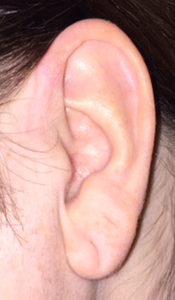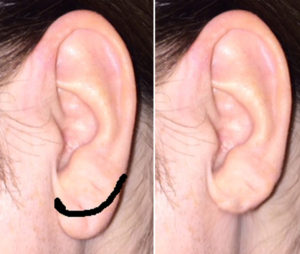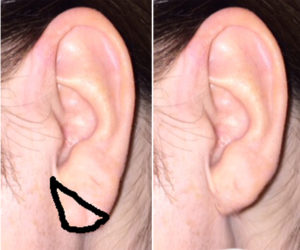Background: Earlobes elongate over time because they have no structural support. They are the only part of the ear that does not contain cartilage. As a result the effects of gravity do make true the old adage that the ‘ears do grow longer as we age’. (although stretching of soft tissue, a passive process, should not be confused with an active growth process that makes new tissue) Certain external factors can exaggerate this natural elongation of the earlobes such as heavy ear ring wear and even facelift surgery if not well done.
Large or long earlobes are unattractive because they are disproportionate to the size of the rest of the ear but can also be viewed as a sign of aging. Earlobes can be very effectively reduced by a variety of tissue excision techniques.While many types of earlobe reductions have been described, they fundamentally come down to a wedge excision through the body of the earlobe or an elliptical excision oriented across the bottom of the earlobe. Each approach has its own advantages and disadvantages.



The aesthetic advantage and disadvantages of each earlobe technique must be considered. In this case the patient opted for the wedge excision as it was important to have the posterior piercing hole moved forward. Even though the tradeoff to do was less of a vertical reduction and the change to an attached earlobe connection.
Highlights:
1) Earlobe reductions are done by a different excisonal tissue patterns.
2) The location of piercing holes and whether the earlobe is attached or unattached will influence the type of earlobe reduction done.
3) Wedge excision earlobe reductions maintain or create an attached earlobe to the face.
Dr. Barry Eppley
Indianapolis, Indiana


